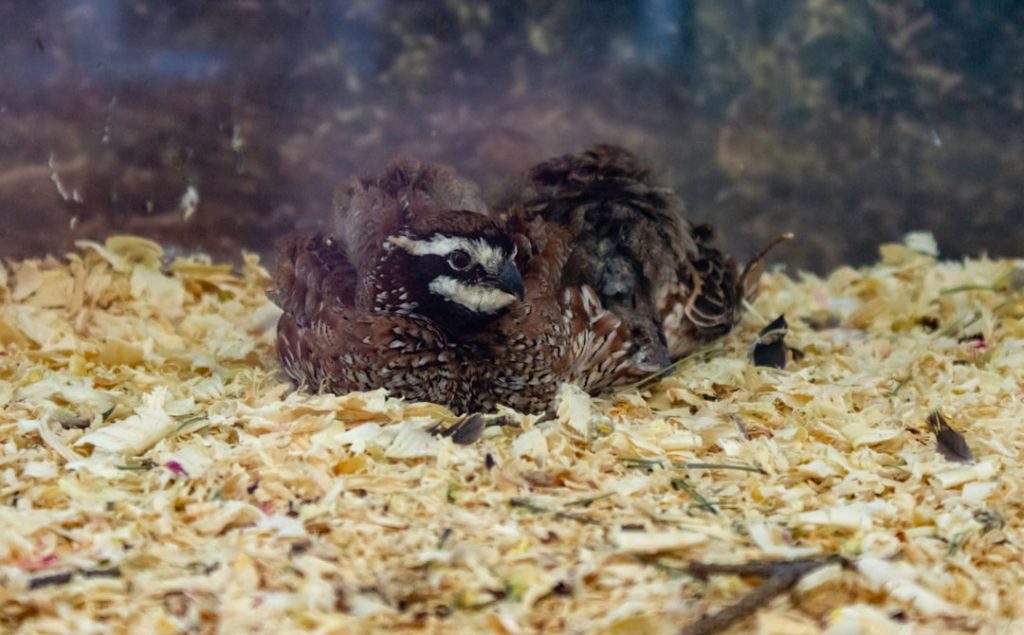Quail breeding battery refers to a system of raising quails in a controlled environment for the purpose of producing eggs and meat. This method of quail farming is popular among commercial quail breeders due to its efficiency and space-saving design. The breeding battery typically consists of stacked cages or compartments that allow for the maximum use of vertical space, making it ideal for small-scale or urban quail farming operations. The system is designed to provide a comfortable and productive environment for the quails, while also making it easier for breeders to manage and monitor their flock.
Quail breeding batteries are an important part of the poultry industry, as quail eggs and meat are in high demand due to their nutritional value and unique flavor. By using a breeding battery system, quail breeders can maximize their production capacity and streamline their operations, ultimately leading to higher yields and profits. However, setting up and managing a quail breeding battery requires careful planning and attention to detail in order to ensure the health and well-being of the quails, as well as the success of the breeding program. In the following sections, we will explore the key aspects of setting up and managing a quail breeding battery, including selecting the right breeding stock, maintaining their health and nutrition, monitoring production, and troubleshooting common issues that may arise.
Table of Contents
- 1 Setting Up a Quail Breeding Battery
- 2 Selecting the Right Quail Breeding Stock
- 3 Managing Quail Breeding Battery Health and Nutrition
- 4 Monitoring Quail Breeding Battery Production
- 5 Troubleshooting Common Issues in Quail Breeding Battery
- 6 Conclusion and Future Considerations for Quail Breeding Battery
- 7 FAQs
- 7.1 What is quail breeding battery?
- 7.2 What are the benefits of using quail breeding battery systems?
- 7.3 What are the key components of a quail breeding battery system?
- 7.4 What are the considerations for setting up a quail breeding battery system?
- 7.5 Are there any regulations or guidelines for quail breeding battery systems?
Key Takeaways
- Quail breeding batteries are an efficient way to raise quail for meat and egg production in a controlled environment.
- Setting up a quail breeding battery requires careful consideration of space, ventilation, and lighting to ensure the health and productivity of the quail.
- Selecting the right quail breeding stock is crucial for maintaining genetic diversity and desirable traits in the quail population.
- Managing quail breeding battery health and nutrition involves providing a balanced diet, clean water, and regular health checks to prevent diseases and ensure optimal growth.
- Monitoring quail breeding battery production involves keeping track of egg and meat yields, as well as the overall health and behavior of the quail population.
Setting Up a Quail Breeding Battery
Setting up a quail breeding battery involves several key steps to ensure the comfort and productivity of the quails. The first step is to choose a suitable location for the battery, taking into consideration factors such as ventilation, temperature control, and access to water and electricity. The battery should be placed in a well-ventilated area with good air circulation to prevent the buildup of ammonia and other harmful gases. Additionally, the temperature should be regulated to provide a comfortable environment for the quails, especially during extreme weather conditions.
Once the location is chosen, the next step is to select and install the appropriate equipment for the breeding battery. This includes choosing the right type of cages or compartments that provide enough space for the quails to move around and lay eggs comfortably. The cages should also be designed to allow for easy access for feeding, watering, and egg collection. Additionally, the battery should be equipped with proper lighting to stimulate egg production and maintain a consistent day-night cycle for the quails.
Finally, it is important to implement biosecurity measures to prevent the spread of diseases and parasites within the breeding battery. This includes regular cleaning and disinfection of the cages, as well as implementing protocols for visitors and equipment entering the facility. By following these steps, breeders can ensure that their quail breeding battery is set up for success and productivity.
Selecting the Right Quail Breeding Stock
Selecting the right breeding stock is crucial for the success of a quail breeding battery. The quality of the breeding stock will directly impact the productivity and health of the flock, as well as the overall success of the breeding program. When choosing breeding stock, breeders should look for quails that are healthy, active, and have good body conformation. It is also important to select birds that come from a reputable source with a history of good genetics and disease resistance.
In addition to physical characteristics, breeders should also consider the age and reproductive history of the breeding stock. Younger quails are generally more productive and have a longer reproductive lifespan, while older birds may have decreased fertility and egg production. It is also important to consider the genetic diversity of the breeding stock in order to prevent inbreeding and maintain a healthy and robust flock.
Furthermore, breeders should pay attention to the temperament and behavior of the quails when selecting breeding stock. Quails that are calm and non-aggressive are generally easier to manage and less likely to exhibit stress-related behaviors that can impact their productivity. By carefully selecting the right breeding stock, breeders can ensure that their quail breeding battery is populated with healthy, productive birds that will contribute to a successful breeding program.
Managing Quail Breeding Battery Health and Nutrition
Maintaining the health and nutrition of quails in a breeding battery is essential for ensuring their productivity and well-being. Proper nutrition is crucial for egg production, growth, and overall health of the quails. A well-balanced diet should include high-quality commercial quail feed that is specifically formulated for their nutritional needs. The feed should contain essential nutrients such as protein, vitamins, minerals, and amino acids to support egg production and overall health.
In addition to commercial feed, quails should also have access to clean water at all times. Water is essential for digestion, temperature regulation, and egg formation in quails. It is important to regularly check water quality and availability to ensure that the quails are adequately hydrated.
Furthermore, maintaining good hygiene and sanitation within the breeding battery is crucial for preventing diseases and parasites. Regular cleaning of cages, feeders, and waterers can help reduce the risk of infections and maintain a healthy environment for the quails. Additionally, implementing a vaccination program and regular health checks by a veterinarian can help prevent common diseases and ensure the overall health of the flock.
Overall, managing the health and nutrition of quails in a breeding battery requires careful attention to detail and regular monitoring of their diet, water supply, hygiene, and overall well-being. By providing a balanced diet, clean water, and a clean environment, breeders can ensure that their quails remain healthy and productive throughout their reproductive lifespan.
Monitoring Quail Breeding Battery Production
Monitoring production in a quail breeding battery is essential for evaluating the success of the breeding program and identifying areas for improvement. One key aspect of production monitoring is tracking egg production and fertility rates. This can be done by keeping detailed records of daily egg collection, as well as monitoring hatch rates from fertilized eggs. By tracking these metrics over time, breeders can identify patterns and trends in production that may indicate issues with nutrition, health, or environmental conditions.
In addition to egg production, breeders should also monitor the growth and development of young quails in the breeding battery. This includes tracking weight gain, feed conversion rates, and overall growth performance. By monitoring these metrics, breeders can identify any issues with nutrition or health that may be impacting the growth and development of the quails.
Furthermore, it is important to monitor the overall health and behavior of the quails in the breeding battery. This includes observing their activity levels, feeding behavior, and any signs of stress or illness. Regular health checks by a veterinarian can also help identify any potential health issues early on and prevent them from impacting production.
By monitoring production metrics and overall flock health, breeders can make informed decisions about management practices, nutrition programs, and potential interventions to improve productivity in their quail breeding battery.
Troubleshooting Common Issues in Quail Breeding Battery

Despite careful planning and management, breeders may encounter common issues in their quail breeding battery that can impact production and overall success. One common issue is low egg production or fertility rates, which may be caused by factors such as inadequate nutrition, stress, or disease. By monitoring egg production closely and evaluating nutrition programs, breeders can identify potential causes of low productivity and make necessary adjustments to improve egg production.
Another common issue in quail breeding batteries is aggression or cannibalism among birds. This behavior can be caused by overcrowding, inadequate space, or poor environmental conditions. By providing enough space per bird, implementing enrichment activities, and addressing any environmental stressors, breeders can reduce aggressive behaviors among quails.
Additionally, breeders may encounter health issues such as respiratory infections or parasites within their breeding battery. Regular health checks by a veterinarian can help identify these issues early on and implement appropriate treatment or prevention measures.
By troubleshooting common issues in their quail breeding battery, breeders can address potential problems early on and implement effective solutions to maintain productivity and overall flock health.
Conclusion and Future Considerations for Quail Breeding Battery
In conclusion, setting up and managing a quail breeding battery requires careful planning, attention to detail, and regular monitoring of production metrics and overall flock health. By selecting the right breeding stock, providing proper nutrition and hygiene, monitoring production metrics, and troubleshooting common issues, breeders can ensure the success of their quail breeding program.
Looking ahead, future considerations for quail breeding batteries may include implementing sustainable practices such as waste management systems, energy-efficient equipment, and alternative feed sources to reduce environmental impact. Additionally, advancements in technology such as automated monitoring systems for production metrics and health parameters can help streamline management practices and improve overall efficiency in quail breeding batteries.
Overall, quail breeding batteries play an important role in meeting the demand for quail eggs and meat in the poultry industry. By implementing best practices in setting up and managing these systems, breeders can ensure the productivity and well-being of their quails while contributing to a sustainable and thriving quail farming industry.
If you’re interested in quail breeding battery systems, you might also want to check out this article on the Producers Pride Sentinel Chicken Coop from PoultryWizard. This coop is designed to provide a comfortable and secure environment for chickens, which could offer some valuable insights for optimizing quail breeding setups. You can read more about it here.
FAQs
What is quail breeding battery?
Quail breeding battery refers to a system of housing and breeding quails in a controlled environment. It typically involves the use of stacked cages or trays to maximize space and efficiency in quail breeding operations.
What are the benefits of using quail breeding battery systems?
Quail breeding battery systems allow for efficient use of space, easy management of breeding stock, and effective collection of eggs. They also help to minimize the risk of disease and provide a controlled environment for optimal breeding conditions.
What are the key components of a quail breeding battery system?
A quail breeding battery system typically includes stacked cages or trays, feeding and watering systems, egg collection trays, and a waste management system. The cages are designed to provide adequate space and ventilation for the quails while maximizing the use of available space.
What are the considerations for setting up a quail breeding battery system?
When setting up a quail breeding battery system, it is important to consider factors such as space requirements, ventilation, temperature control, lighting, and waste management. Proper planning and attention to detail are essential for the success of the breeding operation.
Are there any regulations or guidelines for quail breeding battery systems?
Regulations and guidelines for quail breeding battery systems may vary by location. It is important to research and comply with any relevant laws or regulations regarding animal welfare, biosecurity, and environmental impact when setting up and operating a quail breeding battery system.
Meet Walter, the feathered-friend fanatic of Florida! Nestled in the sunshine state, Walter struts through life with his feathered companions, clucking his way to happiness. With a coop that’s fancier than a five-star hotel, he’s the Don Juan of the chicken world. When he’s not teaching his hens to do the cha-cha, you’ll find him in a heated debate with his prized rooster, Sir Clucks-a-Lot. Walter’s poultry passion is no yolk; he’s the sunny-side-up guy you never knew you needed in your flock of friends!







